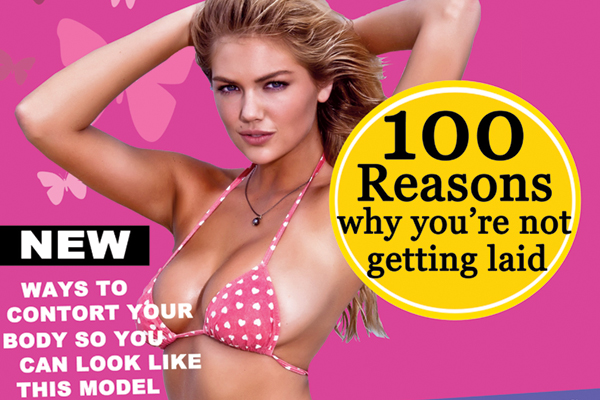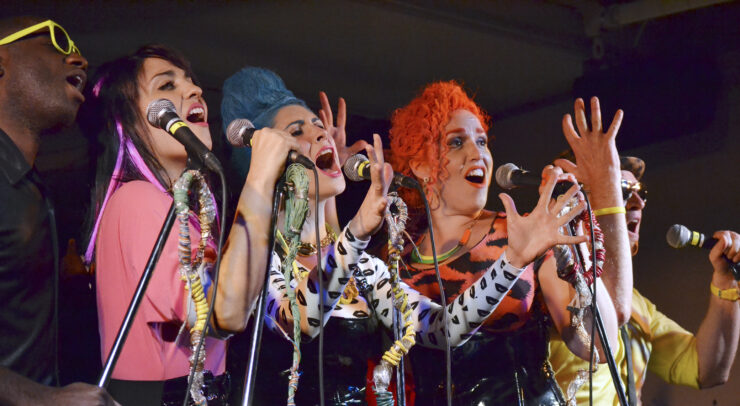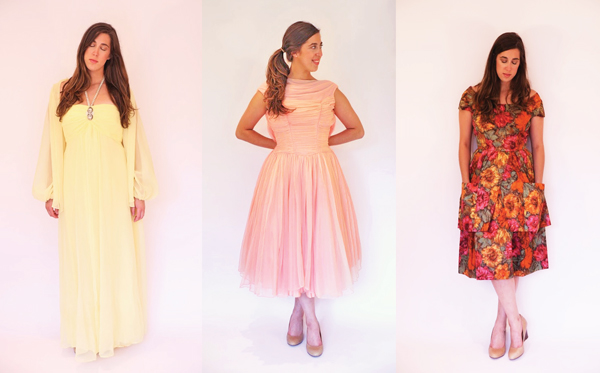But it may not always be so obvious
Image by Tina Wallace
Walking through a mall or down the street is like flipping through an issue of a magazine. Everywhere we turn there are advertisements and as much as we’d like to think we can resist their pull, ads can really work their way into our minds.
Advertising has a major effect on everyone, whether they realize it or not. According to feminist author and filmmaker Jean Kilbourne in her 2010 documentary Killing Us Softly 4: Advertising’s Image of Women, the average American is exposed to more than 3,000 ads each day and will spend approximately two years of their life watching television commercials.
In the documentary, Kilbourne says ads don’t only sell products.
“They sell images, they sell concepts of love and sexuality, of success, and perhaps most important, of normalcy,” she says. “To a great extent they tell us who we are, and who we should be.”
When advertising sends these messages, it’s impossible not to be subconsciously and consciously affected. But how does advertising control our behaviour and the way we think about ourselves and other social and cultural phenomena?
[styled_box title=”Did you know?” color=”yellow”]A study from the University of Manitoba revealed that 56%
of ads in a selection of 2007-08 men’s magazines portrayed
one or more hyper-masculine beliefs, such as:
– toughness as emotional self-control
-violence as manly
-danger as exciting
-calloused attitudes toward women and sex[/styled_box]
Gender
Most ads tend to display traditional roles for women and men, ignoring what feminists and other gender activists have worked to overcome.
Florian Grandena, assistant professor in the department of communication at the University of Ottawa, says there are two main representations of women in advertisements that maintain traditional perceptions of women.
“You have the over-sexualized women or you have the domesticated women,” he says. “The virgin-whore dichotomy is still there, very much so.”
The problem with this dichotomy is its influence on the way we perceive women says Grandena. According to many ads, a real woman has to fit into the virgin category or the whore category.
This can cause men to view women as either modest or overly sexual, and it can also cause women to think of themselves this way. The virgin-whore categories are incredibly contradictory. What are women to do? If they are straight-laced and well-mannered, they will frequently be considered prudes. If they’re sexually liberal, many people may deem them to be slutty and undeserving of respect. It’s a lose-lose situation that is constantly perpetuated by many advertisements.
Grandena also discusses how ads portray men as clueless when it comes to cleaning and kitchen work, whereas women are often dominant. These ads reinforce the idea that women are only better than men in the home and that they should stick to what they know best: cooking and cleaning.
Jenny Henderson, a second–year communications student at the U of O, says she remembers the effect gender roles had on her growing up.
“I actually used to be a ‘tomboy’ in elementary school and would be teased for it, so I made myself become more ‘girly’ just to please the society I was in,” she says.
Men also often feel pressure from advertisements to conform to traditional gender roles. Kilbourne defines feminine qualities such as compassion, cooperation, empathy, intuition, and sensitivity as those that have been deemed feminine by society and therefore less valued. Men who possess any of these qualities are sometimes perceived as less masculine.
Kilbourne also says the images of men in pop culture can lead to violent behaviour.
“They grow up in a world in which they’re encouraged to be tough and insensitive,” she says.
With these images of men in our advertisements, it can make it seem normal for men to be violent and insensitive and abnormal for them to be anything else.
[styled_box title=”DID YOU KNOW?” color=”pink”]Between 1983 and 1003, the percent of ads using sex to sell products rose from
15% to 27%[/styled_box]
Sexuality
Heterosexuality dominates the world of advertising and this can have a major effect on how individuals see themselves.
“Sex in advertising is relentlessly heterosexist,” says Kilbourne. “Gay men barely exist outside of publications targeting them and the portrayal of lesbians almost always comes straight from the world of porn.”
She says it’s a problem because it showcases gay men as outsiders and lesbians as overly sexual. Homosexual men can therefore become ostracized in our subconscious and homosexual women become sexual objects.
The portrayal of homosexuality in advertising tends to be very sexual, which can lead to the mistaken belief that gay culture is centered around promiscuity.
Though the way gay people are represented can affect the way they’re viewed by the population, their absence in ads has an even greater effect.
“The majority of non-queer images are going to have more impact on queers than queer images,” says Grandena.
Henderson says the lack of gay representation in the media affected the way she felt in her own skin.
“Being bisexual, I was frustrated in high school because there weren’t any shows that I felt could identify with my sexuality,” she says. “All I ever saw on television and in ads were straight couples, and therefore I felt guilty whenever I thought of a girl as anything besides a friend.”
Fourth-year psychology student Rebekah Snelling says she notices the blatant discrimination in advertising in regards to sexuality.
“I don’t think I realized there was so much emphasis on heterosexual couples in advertising until I saw an ad for TD Bank which featured a gay couple,” she says. “It stood out as different to me so much so that it made me consider how only seeing heterosexual couples can really make homosexuality an abnormal phenomenon in our society, when it isn’t.”
The road to change
Many advertisements have a negative effect on sexuality and gender, but many companies are slowly starting to make changes.
In June 2012, Nabisco, an American company that sells cookies and snacks, posted a controversial ad for Oreos in support of Gay Pride, an annual worldwide event that takes place every June. The ad was simple and had an Oreo with rainbow-coloured layers of icing and the words, “June 25. Pride.”
This simple ad caused uproar from anti-gay viewers, including the American Family Association, an organization that opposes gay marriage. However, it also caused many people to support Oreos and Nabisco more because of their evident pro-gay message.
Grandena says there is no real way for us to know Nabisco’s motivation in supporting Gay Pride, but showing support for the community, is a good thing, regardless of how they may profit from it.
According to Grandena, what’s important is that companies begin to represent a variety of sexualities in their ads year-round.
“I think it’s nice to target this particular market audience during that special event, but many people do not like Gay Pride, they don’t relate to Gay Pride at all, so there’s not only one way of being gay or being queer or being a lesbian,” he says. “It would actually be braver if advertising companies tried to represent the gay community during the year and not only at this specific event.”
More companies are starting to support sexualities and genders that are considered outside the norm. Toyota, Amazon, Heinz, and McDonald’s have used ads that show homosexual couples. There have also been companies such as Huggies that have featured men in the traditional women’s role: cooking, cleaning and looking after their children.
Henderson says a show she watched when she was in high school deviated from the heterosexual norms usually demonstrated in the media.
“Much Music aired a showed called South of Nowhere which portrayed girls my age going through similar things as myself,” she says. “That affected me in a positive way.”
Though advertising can work its way into our subconscious to alter the way we perceive gender roles and sexualities, being aware of the ads we see can combat the way they affect our perceptions.
“We see so many ads in a day that it’s pretty much impossible to evaluate the messages in all of them,” says Snelling. “I guess what’s most important is being critical of the ones we are conscious of and trying to form our own opinions about sexualities and gender roles.”
We may never be able to catch every ad that is in front of us, but as long as we can learn to evaluate the ideas the advertisements depict behind the products they sell, we can try to deprogram the way these messages have taught us to perceive gender and sexuality.
[styled_box title=”The Numbers” color=”purple”]Out of 18 product categories, those most often using sexual imagery in advertising were:
38% health and hygiene
36% beauty
29% drugs and medicine
27% clothing
23% travel
21% entertainment[/styled_box]







